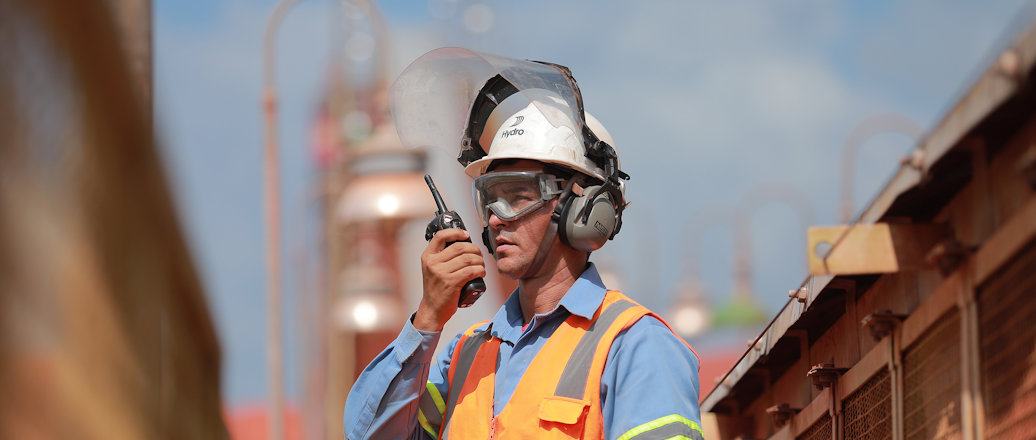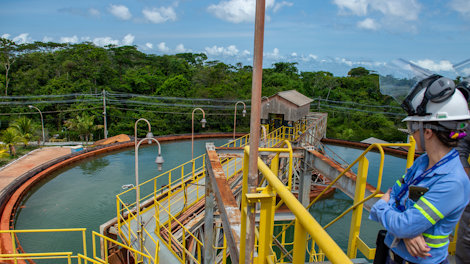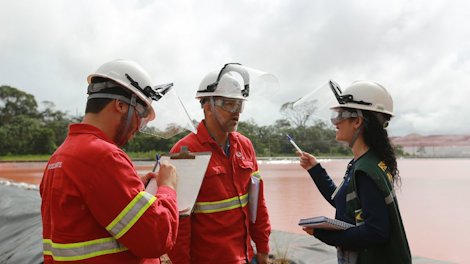In February 2018, the region of Barcarena, in northern Brazil, suffered from flooding following two days of heavy rainfall. The areas flooded included Alunorte’s alumina refinery.
Following the rainfall, communities around the alumina refinery were concerned that flooding could have resulted in overflows or leaks from Alunorte’s bauxite residue deposits into surrounding areas. Bauxite residue results from the alumina refining process. At Alunorte, the bauxite residue is dry-stacked and stored in bauxite residue deposits.
Multiple site inspections confirmed there was no overflow or leakage from Alunorte's solid residue deposits, which is a controlled and accurately prepared place to store the bauxite residue. This was also confirmed by independent third-party companies and authorities as detailed below:
Understanding the facts about February 2018 in four steps:
The rainfall led to flooding in the region
In February 2018, the region of Barcarena, in the state of Pará, was hit by severe rainfall, reaching a frequency of more than 239 millimeters in approximately 24 hours, between February 16 and 17, a much higher volume than the average normally observed this time of year. According to the public official records, the rainfall in 24 hours was double the full month of February the previous year. The rainfall led to flooding in the region, including several communities located in Barcarena and its surroundings.
Alunorte's water management systems worked properly during the rainfall. However, on February 16, there was an external power surge as well as a lightning strike. Together with the resulting power outage this affected the capacity of Alunorte's effluent treatment system. Only the capacity of the effluent treatment system was affected, the treatment process itself continued to work properly. To overcome these adverse conditions, operational safety and emergency measures were adopted by Alunorte during the rainfall to prioritize the treatment of runoff water from the two bauxite residue deposits areas at the treatment station. At no time has the supply exceeded the maximum capacity of the water treatment station.
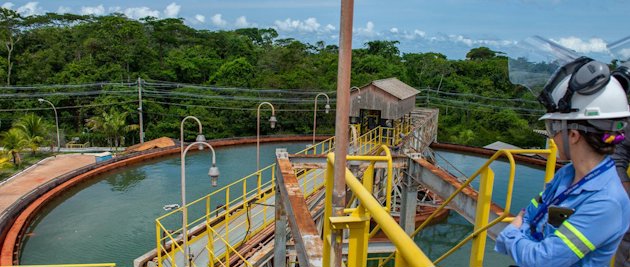
The bauxite residue deposit areas operated as designed during the entire rainfall period. All rainwater that fell on to and had contact with the bauxite residue, was carried in channels through the drainage system and into the containment basins. This water was then processed by Alunorte’s industrial effluent treatment station, where it was treated before being discharged into the Pará River, in line with the operational license.
Watch the videos below to understand how the DRS system worked in February 2018:
DRS 1 video: https://www.youtube.com/watch?v=d9QfRPEbPv4
DRS 2 video: https://www.youtube.com/watch?v=jqcJDX2Az9A
After the rainfalls, it was confirmed by external agency inspections that there was no overflow or leakage from Alunorte's bauxite residue deposits during the severe rainfalls of February 2018.
These analyses were made by the relevant authorities, including the local environmental regulator (SEMAS) and the federal environmental regulator (IBAMA).
No environmental damage
Several inspections and audits inside the refinery made by local, state and federal level government officials and independent agencies confirmed there was no overflow from Alunorte’s bauxite deposits. The rainwater that fell into the deposits was properly directed to the surrounding channels that sends the rainwater which had contact with the residues to be treated in Alunorte’s Industrial Effluent Treatment Station. After this, the treated effluents were then discharged into the Pará river. Multiple site inspections confirmed there was no overflow or leakage from Alunorte's solid residue deposits, including an inspection by a company appointed by the Federal Public Prosecutors office. This was presented during a hearing held by the 9th Federal Court of Belém.
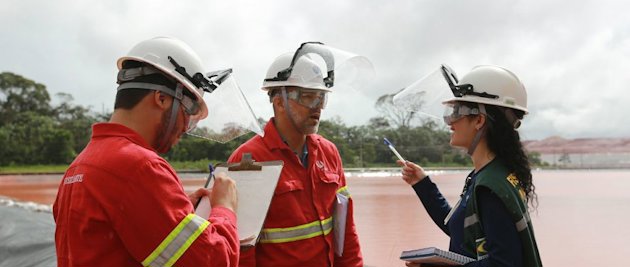
The refinery has state-of-the-art technology for the treatment and disposal of residues from the production of bauxite and alumina. The activities are duly licensed, and the plant's operations are monitored and audited by government authorities and by independent certifying companies.
Performed in order to optimize the operation of Alunorte’s onsite effluent treatment plant
There was no overflow during the 2018 event. Due to the heavy rainfall during this period and the power outage, two exceptional situations were registered at Alunorte, not related to the bauxite residue deposits (DRS):
i. Alunorte performed controlled emergency discharges of rainwater from the refinery area, after pH-treatment, into the Pará River using an old channel without first passing through the industrial effluent treatment plant. Based on measurements in the Pará river during and after the rainfall, this had no environmental damage.
The controlled emergency discharge:
- Relieved the pressure on the water treatment plant, avoiding system overcharge and ensuring that effluents coming from the DRS’s were treated by the water treatment plant.
- According to the measurements of pH and turbidity of the Pará River during the rainfall, the emergency discharge was within the turbidity and pH limits established in Alunorte’s operational license.
- The environmental consultancies and Campina Grande Federal University (UFCG), concluded the decision to discharge rainwater through the old channel was the best alternative to avoid a possible overcharge of ETEI system due to that situation. This was also confirmed by the independent consultancy hired by the Federal Public Prosecutors.
ii. Due to flooding of part of the Alunorte site (sump 45), a small amount of rainwater seeped from within this site through cracks in an old, concrete sealed drainage pipe to outside the refinery area (to land also owned by Alunorte). This had no environmental damage.
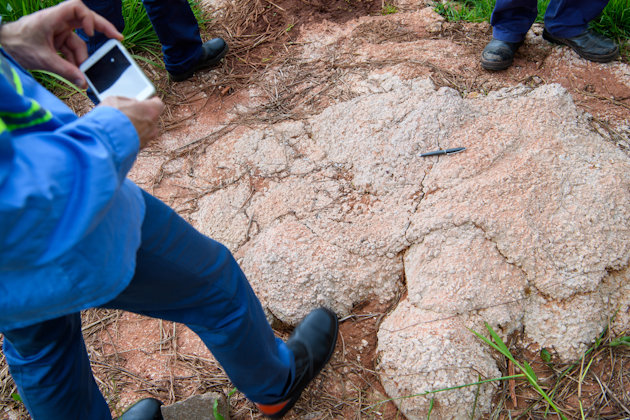
Sump 45 was a basin for the collection and storage of excess rainwater in a non-operational area (parking and storage), to be pumped to the effluent treatment plant. As a result of the power outage, the pumping station at sump 45 shut down and could not be restarted as the area was in the meantime flooded with rainwater. The rainwater in sump 45 reached such a high level that it rose above the level of an old drainage pipe sealed with concrete (in the past used for drainage during construction work on the site). Due to the weathering, hairline cracks had developed in the concrete seal of this drainage pipe, which allowed water to seep through the drainage pipe and exit the sump 45 area to an uninhabited, swampy area still within Alunorte’s property.
The amount of rainwater that seeped from the hairline cracks was immaterial. In addition, technical study performed by the Federal University of Pará (UFPA) showed the seeping could never have reached any of the local waterbodies. The pH measurements of the soil in the area confirmed no environmental damage.
SUMP 45 video: https://youtu.be/1T9WamLRKO8
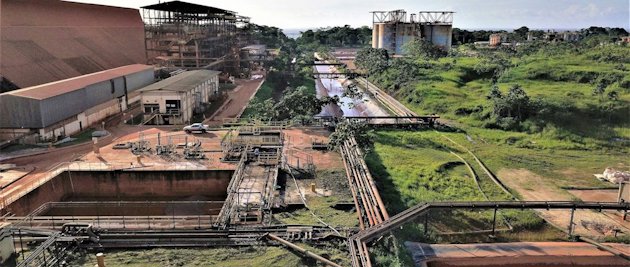
Multiple site investigations confirmed no overflow, embargo lifted
An embargo that cut off 50 percent of Alunorte’s production capacity, as well the use of the bauxite residue deposit 2 (DRS2), was determined by the Brazilian courts and agencies on February 27, 2018.
During the hearing held on April 12, 2019, the independent consultancy hired by the Federal Public Prosecutors confirmed Alunorte could operate safely. In agreement with this conclusion, the federal court in Belem lifted the production embargo on Alunorte on May 20, 2019.

Despite evidence there was no overflow of the bauxite residue deposits and the absence of environmental impact or damage, Alunorte signed a Term of Adjusted Conduct (TAC) to develop technical studies to confirm the lack of damage related to February 2018 rainfall, and also identify potential improvements to further enhance the safety of Alunorte’s operations.
More information can be found in the Term of Adjusted Conduct (TAC).
Hydro and Alunorte take robust measures to prevent environmental pollution and conduct their activities with the required environmental permits.
Alunorte continues to engage in contributing to the sustainability and development of the neighboring communities.
Updated: May 15, 2024
